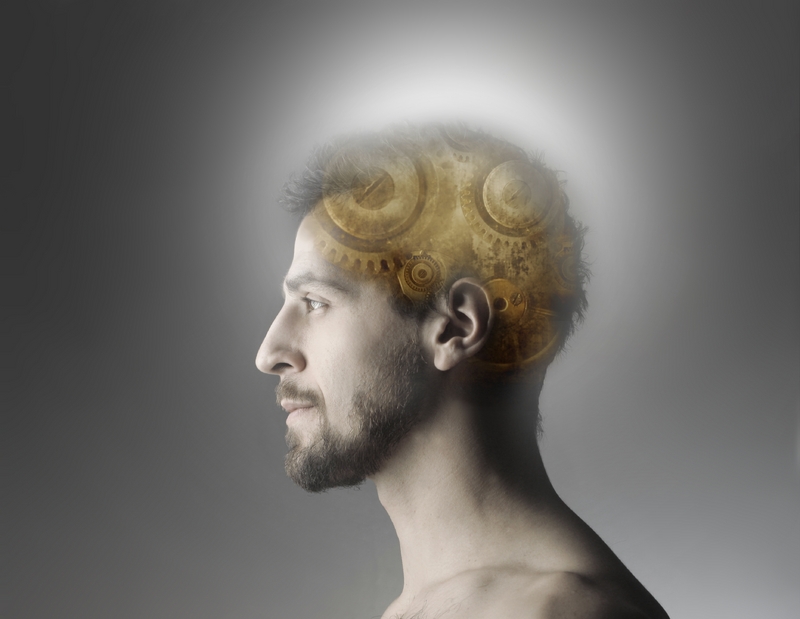Forgetful? The Key May Be to Turn Brain Cells 'Young' Again

The cause of age-related memory loss — that moment of "where did I leave my keys?" — has been found and reversed in monkeys, researchers announce.
By restoring a chemical imbalance in the brains of elderly monkeys, the study scientists transformed aging brain cells into young ones, capable of sustaining working memory, through which the brain is able to hold a thought for a short period of time.
Monkeys have long been used as a model for human brain studies, and so the results may also hold true for humans, though further research is needed to confirm that.
"This starts to change very early — by your thirties or so, you start to show decline in your working memory. This kind of memory is actually quite vulnerable," said Carol Barnes, Director of the Evelyn F. McKnight Brain Institute at the University of Arizona, who was not involved in the study.
"What's exciting about this study is the more you understand about how memory changes in different brain regions, the better we will be able to do something about it," Barnes added. [5 Things That Cause Memory Loss]
Monkey brains
The researchers studied working memory in a group of monkeys separated into three life stages: Young monkeys (ages 7 and 9, or the equivalent of 21-27 in human years), middle-age monkeys (12 and 13, or 36-39 in human years), and older monkeys (17 and 21, or 51-63 in human years).
Sign up for the Live Science daily newsletter now
Get the world’s most fascinating discoveries delivered straight to your inbox.
Using special tiny probes, the researchers watched single cells in each monkey's prefrontal cortex (where working memories are formed and stored) as the monkeys performed a memory task; the monkeys had to remember the location of a treat in a computer simulation for 2.5 seconds, a time short enough for even the oldest monkeys to perform well. If they don't do well at the test, the older monkeys get frustrated and won't play anymore, study researcher Amy Arnsten of Yale University School of Medicine told LiveScience.
As expected, the memory circuit in the brains of older monkeys didn't sustain activity as well as in younger monkeys, even though they still performed accurately at this short time scale. In longer trials, up to 5 seconds, they didn't perform as well as the younger monkeys.
The researchers knew that a chemical called cyclic AMP played an important role in memory formation in the prefrontal cortex and that too much of the brain chemical could lead to forgetfulness in monkeys and humans alike.
To test if lowering cyclic AMP could help restore brain function in these monkeys, the researchers injected tiny amounts of drugs that block it in the vicinity of certain memory-holding neurons. Then, they had the monkeys redo the tests. The drugs improved the ability of these cells to hold a signal, though because the monkeys were already performing well on the tests, the researchers couldn’t see improvement on the actual tasks.
"If we restore the correct neurochemical environment, they were able to fire like young neurons," Arnsten said. "It's very easy for something to be impaired and not work right; you have to really understand what's going on to get them to work again."
Brain drugs
Previous research on these kinds of cyclic AMP-blocking drugs, which include the attention deficit hyperactivity disorder (ADHD) drug Guanfacine, showed that they could improve memory performance in older monkeys when administered throughout the body, though scientists didn't know how this occurred in the brain. The drug is currently in clinical trials to determine if it has the same effects on humans. (Arnsten and Yale University receive royalties from sales of the extended release form of Guanfacine, but not the immediate release form used in the study or the clinical trial.)
"These are the abilities that we need in the information age to thrive — for example, to hold down demanding careers," Arnsten said. Drugs that improve working memory, especially in those facing age-related memory issues, could help restore brain function. "They don't make you superhuman. They will just bring you back to your best."
There is a catch, though: Other parts of the brain depend on high levels of cyclic AMP to function correctly, so tampering with cyclic AMP could have some unintended side effects. The Guanfacine drug seems to be safe, since it's already approved to use in ADHD patients to regulate impulses and improve working memory.
"I'm really excited about the results, and it's already in clinical trials in humans, so that's presumably fairly safe. We don't know how this is going to generalize other kinds of memory," Barnes said. "One memory system, the [prefrontal cortex], might be enhanced, and others may be negatively affected."
The study, which was supported by a grant from the National Institute on Aging, was published today (July 27) in the journal Nature.
You can follow LiveScience staff writer Jennifer Welsh on Twitter @microbelover. Follow LiveScience for the latest in science news and discoveries on Twitter @livescience and on Facebook.
Jennifer Welsh is a Connecticut-based science writer and editor and a regular contributor to Live Science. She also has several years of bench work in cancer research and anti-viral drug discovery under her belt. She has previously written for Science News, VerywellHealth, The Scientist, Discover Magazine, WIRED Science, and Business Insider.











